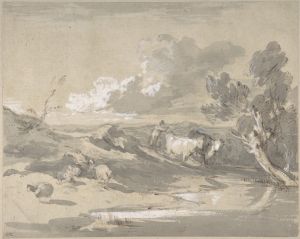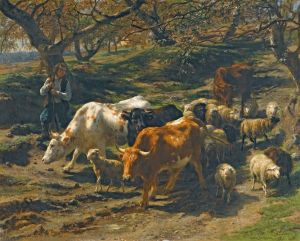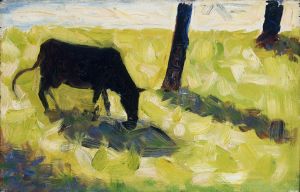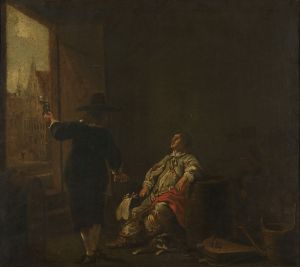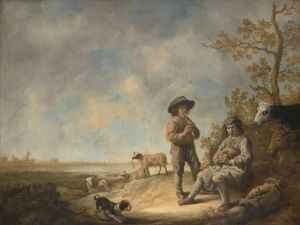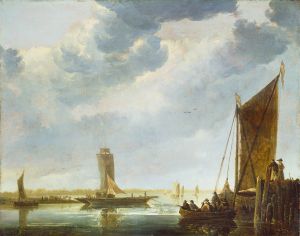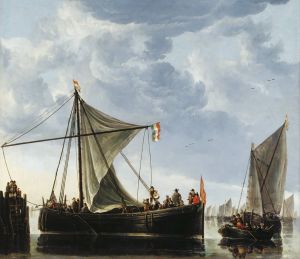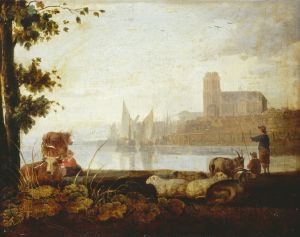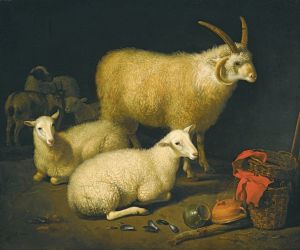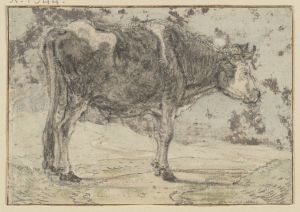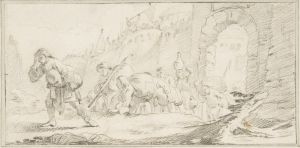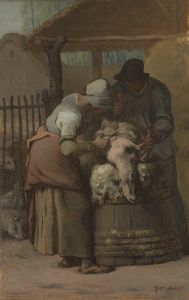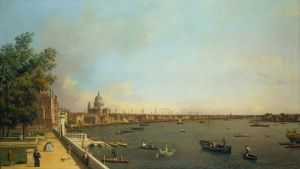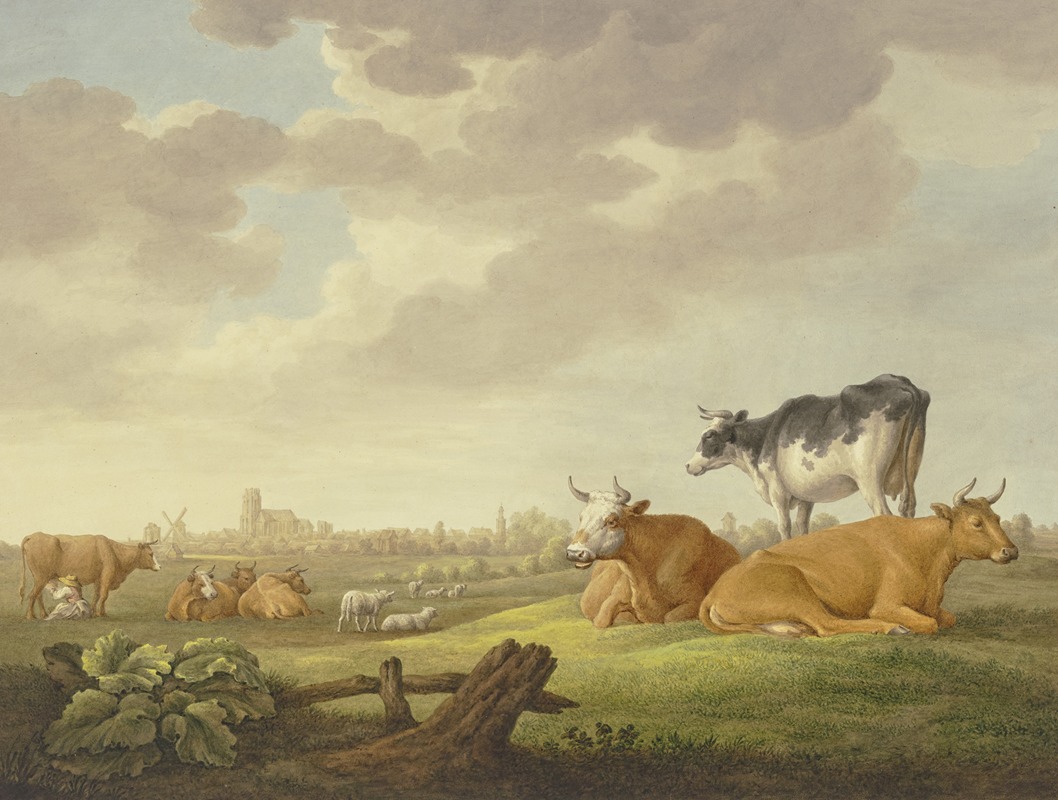
Auf einer Wiese Kühe und Schafe, in der Ferne eine Stadt, links eine Melkerin
A hand-painted replica of Aelbert Cuyp’s masterpiece Auf einer Wiese Kühe und Schafe, in der Ferne eine Stadt, links eine Melkerin, meticulously crafted by professional artists to capture the true essence of the original. Each piece is created with museum-quality canvas and rare mineral pigments, carefully painted by experienced artists with delicate brushstrokes and rich, layered colors to perfectly recreate the texture of the original artwork. Unlike machine-printed reproductions, this hand-painted version brings the painting to life, infused with the artist’s emotions and skill in every stroke. Whether for personal collection or home decoration, it instantly elevates the artistic atmosphere of any space.
Aelbert Cuyp was a prominent Dutch landscape painter of the 17th century, known for his idyllic and serene depictions of the Dutch countryside. One of his works, "Auf einer Wiese Kühe und Schafe, in der Ferne eine Stadt, links eine Melkerin," translates to "Cows and Sheep in a Meadow, a City in the Distance, a Milkmaid on the Left." This painting exemplifies Cuyp's skill in capturing the tranquil beauty of rural life, a theme that was highly popular during the Dutch Golden Age.
The painting features a pastoral scene, a common subject in Cuyp's oeuvre. In the foreground, cows and sheep are depicted grazing peacefully in a lush meadow. The animals are rendered with a keen eye for detail, showcasing Cuyp's ability to portray the natural world with both accuracy and a sense of harmony. The presence of livestock in his paintings often symbolizes the prosperity and agricultural richness of the Dutch Republic during this period.
To the left of the composition, a milkmaid is seen attending to her duties. The inclusion of human figures in Cuyp's landscapes adds a narrative element to the scene, suggesting a harmonious coexistence between humans and nature. The milkmaid's presence also serves to emphasize the pastoral and bucolic nature of the setting, reinforcing the painting's theme of rural tranquility.
In the background, a city is visible, providing a contrast to the rural foreground. This juxtaposition of urban and rural elements is a recurring motif in Cuyp's work, reflecting the interconnectedness of city and countryside in 17th-century Dutch society. The city in the distance is painted with a soft, atmospheric perspective, a technique Cuyp often employed to create depth and a sense of vastness in his landscapes.
Cuyp's use of light is particularly noteworthy in this painting. The warm, golden light bathes the entire scene, creating a sense of calm and serenity. This mastery of light and atmosphere is a hallmark of Cuyp's style and contributes to the timeless appeal of his landscapes. The way he captures the effects of sunlight on the landscape and the animals is indicative of his deep observation and understanding of nature.
"Auf einer Wiese Kühe und Schafe, in der Ferne eine Stadt, links eine Melkerin" is a testament to Aelbert Cuyp's ability to blend realism with an idealized vision of the countryside. His paintings are celebrated for their peaceful and harmonious qualities, offering viewers a glimpse into the serene beauty of the Dutch landscape during the 17th century. Cuyp's work remains influential, admired for its technical skill and its ability to evoke a sense of tranquility and connection with nature.





